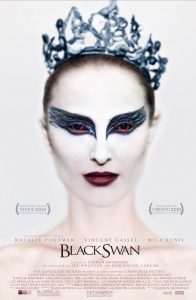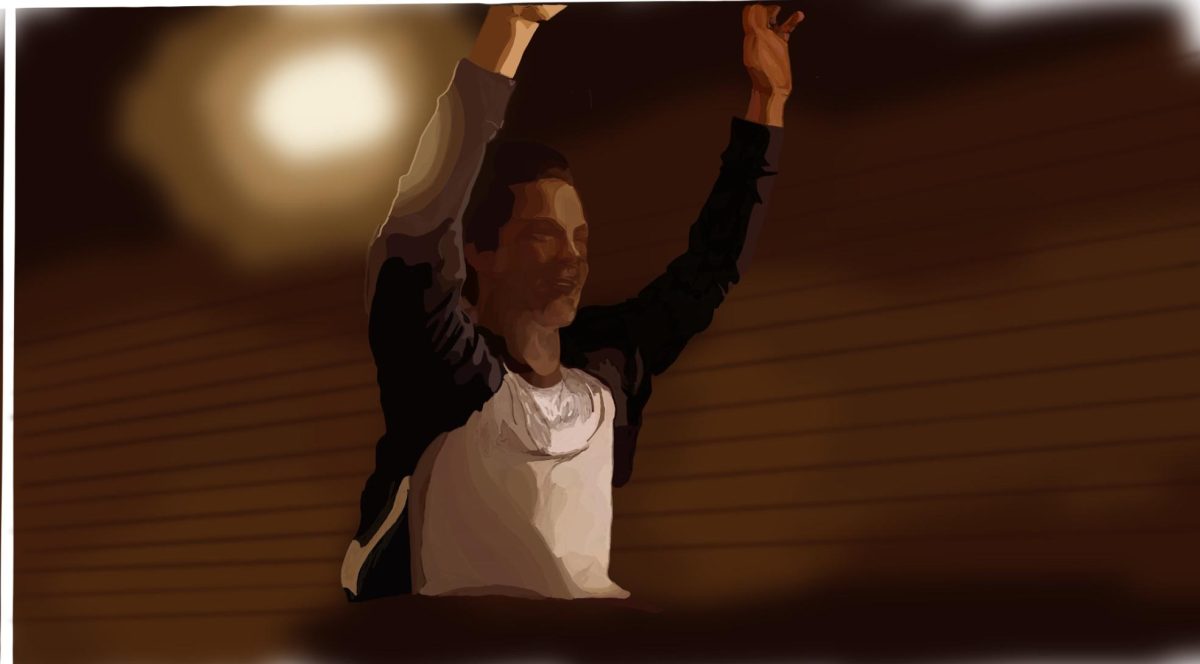Already nominated for Golden Globe Best Picture, Black Swan’s out-of-the-ordinary qualities has helped it become a great success in theaters. The film is based on the irregular re-creation of a ballet within the life of Nina Sayers (Natalie Portman). Nina’s biggest dream is to be the Swan Queen in the famous New York style Ballet, Swan Lake. The Swan Queen role has two aspects to it, the White Swan and the Black Swan. Fragile and innocent Nina is perfect for the White Swan, but she still struggles to develop into the evil Black Swan. The director of the ballet, Thomas Leroy, eventually chooses Nina for this role and challenges her to fulfill the opposing parts. She soon finds herself trapped in developing a mental and physical adaptation to the character, both on and off the stage.
The story of the ballet is seen directly related to the life of Nina—her love life, her loss of innocence, her inexplicable body transformations. In the ballet, the only way to break the evil spell of turning into the Black Swan is through love. Nina’s love life is similar to the ballet because it involves her dance instructor, who gradually works to seduce her in order to inspire the emotions she has to portray on the stage to the audience. Portman’s act of pure innocence in these situations adds to the tension between the two characters. Nina’s innocence is especially contrasted when she is matched up against another dancer in the show, Lilly, played by Mila Kunis, who pertains dark and effortless style in every dance move, which the instructor widely admires. Portman and Kunis play off each other so well, emphasizing the juxtaposition between the two characters, and theoretically emphasizing the juxtaposition of the Black and White Swans as well. As Kunis’s character begins to corrupt Nina by bringing her out to the bars late at night, Nina starts sighting scratch marks and bumps all over her body without an explanation. With the opening performance of the ballet only a night away, Nina starts growing pieces of feathers all over her back. The transformations in her life only help Nina put on an outstanding performance for the audience.
The director of the film, Darren Aronofsky, develops a transformation of Nina as corruption aggrandizes in her character. Nina begins to lose her stability when she is shown having homo-sexual affairs with Lilly, and eventually killing Lilly. The ambiguity of these actions, however, is what interests the audience. A bloody towel that wiped up the evidence of Lilly’s murder is seen before Nina goes on stage and becomes the black swan in the ballet. But, by the time she returns and has become the white swan in the ballet, the towel is clean and Lilly is knocking on her door congratulating her on a great job. The only way to explain these events is through hallucinations that Nina has as she continues her role reversal with the two swans. Aronofsky is once again using the changes of the Swan Queen in the play, parallel to the changes of Nina in her life by filming scenes of intense and evil violence that Nina is involved in. The viewers of the film begin to realize the similar stories and recognize that at the end of the ballet the Swan Queen commits suicide; therefore, indicating that Nina will most likely commit suicide as well.
Losing its sanity at many points, the film was held together by Portman and her outstanding acting. She was a big contribution of piecing together the parts of the movie that may confuse viewers. Her emotional attachment to her part helps the audience stay involved throughout her transformation, drawing the audience away from just cringing their faces in disgust with Aronofsky’s production. Some may see this film as pointless, and unrealistic, but the appreciation for the great acting, creativity, and uniqueness is what sets this film aside from the rest.
Eventually, after everything she has gone through, Nina is able to perfect the part of the Swan Queen just as she had hoped. Aronofsky closes the film focusing on the eye contact of Nina and her mom in the audience, exaggerating that they both recognize the changes Nina has experienced. At the finale of the ballet, she plummets to the mattress with the wildly praising audience in the background as her beautiful swan costume is overwhelmed with blood, as she whispers to her instructor, “I was perfect”. The scene makes the viewers recognize how much the role affected Nina; so much, that she brought herself to commit suicide just as the Swan Queen does.
“Black Swan” is quite a daring film, but based on Aronofsky’s career history, he is willing to take the challenge. The parallel story telling adds daring and interesting twists to the movie, forcing the audience to indulge in a double story. “Black Swan” is not a film that a viewer will quietly sit in his/her seat for. It is a film that will disgust, yet intrigue, one in a way they never have before. The true beauty of the film-making expresses the true beauty of the ballet’s production process. The total insanity turn-over in the ballet is perfectly performed by Portman, as she really captures her part’s overgrown obsession with her role as the Swan Queen. With its incomparable irregular qualities, “Black Swan” is definitely a well deserving candidate for Best Picture of 2010.








